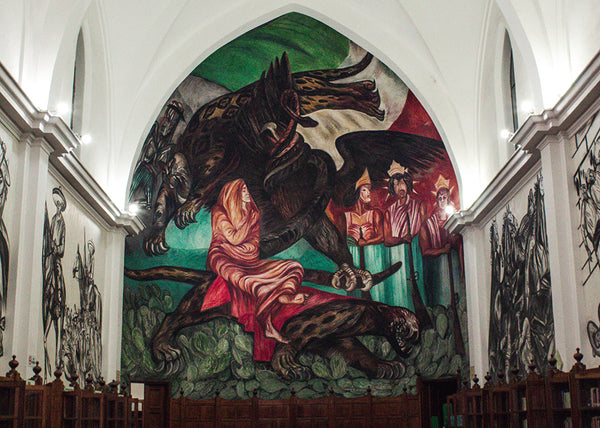Your Cart is Empty
Menu
-
- Tapestries
- Yoga Mats
- Kaleidoscopes
- Our Artists
- Adam One
- Amanda Sage
- Andreilien
- Android Jones
- APEX
- Art of One
- Asirios
- Astral Visions
- Austin Mackereth
- Autumn Skye
- Benedigital
- BL Visuals
- Blake Drezet Art
- Boris Pelcer
- Burgandy Viscosi
- Chris Dyer Positive Creations
- Chris Miele
- Collin Salazar
- Danny Stephens
- Darren Minke
- David Sugich
- Dela
- Dima Yastronaut
- Emily Kell
- Erica Robin
- Free Rein
- Gabriel Welch
- Giohorus
- Gwen A.P.
- I Am Electric
- Jack Laroux
- Johnathan Singer
- Kai Wilder
- Karen Schaefer
- Kirsten Zirngibl
- Light Wizard
- Logan Walden
- Luke Brown
- Marcelo Germana
- Mark Henson
- Martina Hoffmann
- Masha Falkov
- Mélissande Monette
- Moksha Marquardt
- Mr. Melty
- Mugwort
- Natural Warp
- Olivia Curry
- Paul Mez
- Phil Lewis
- Psiloteric Visions
- Psybe Industries
- PsytScene
- Robyn Chance
- Shane Myers
- Sylvia Ritter
- Silvio Vieira
- Simon Haiduk
- Soltice Son
- Steady Lifted
- Swartz Brothers Art
- Sylance
- TAS Visuals
- Totemical
- Trax (Desert Dwellers)
- Tyler Gentry
- Victor Olenev
- Wrenna Monet
- Info
-
- Text 631-743-0278
-
United States (USD $)

Add description, images, menus and links to your mega menu
A column with no settings can be used as a spacer
Link to your collections, sales and even external links
Add up to five columns
Add description, images, menus and links to your mega menu
A column with no settings can be used as a spacer
Link to your collections, sales and even external links
Add up to five columns
Add description, images, menus and links to your mega menu
A column with no settings can be used as a spacer
Link to your collections, sales and even external links
Add up to five columns
Add description, images, menus and links to your mega menu
A column with no settings can be used as a spacer
Link to your collections, sales and even external links
Add up to five columns
Add description, images, menus and links to your mega menu
A column with no settings can be used as a spacer
Link to your collections, sales and even external links
Add up to five columns
Add description, images, menus and links to your mega menu
A column with no settings can be used as a spacer
Link to your collections, sales and even external links
Add up to five columns
Add description, images, menus and links to your mega menu
A column with no settings can be used as a spacer
Link to your collections, sales and even external links
Add up to five columns
Add description, images, menus and links to your mega menu
A column with no settings can be used as a spacer
Link to your collections, sales and even external links
Add up to five columns

Happy Birthday José Clemente Orozco (Mexican Artist)
November 23, 2019 3 min read
When someone mentions the word art, most of us will probably think of Italian, French, German, or European artists in general. Few would think of artists in other countries such as Mexico, Argentina, Brazil, etc. However, little do people know that it is in Mexico that was birthed one of the most important figures in mural painting in the 20th century, whose influence can still be felt in the modern Mexican art scene. José Clemente Orozco is such a man. One of the “Los tres grandes” (The Three Great), Orozco was noticeably much more pessimistic than the other two, meaning he was not as well-revered as the other two. In spite of his apparent shortcomings, he was later considered by modern art historians to have been a giant in modern Mexican art.
Orozco was born November 23rd, 1883 in Zapótlan, now known as Ciudad Guzmán. His family was middle-class one, with his father being an editor at a local newspaper. In 1890, his family moved to Mexico City in search of better financial situations, and it was here that he first took an interest in art. Every day, as he walked from school to home and vice versa, he would stop at the open workshop of the famous artist José Guadalupe Posada. At that time, Posada was already a famous printmaker in Mexico, and his strange, grotesque, and disturbing illustrations were used for broadsheet illustrations, usually for crimes and political scandals. Young Orozco was enchanted by these illustrations, and they then became the first artistic influences on him.
Orozco signed up for several night classes on drawing at the Academy of San Carlos, where he was free to express his artistic talent. However, his joy did not last long as he was forced to follow his father’s wish to become an architectural draftsman. This career did not last long due to an accident, and in 1905, he returned to the Academy, now even more determined to become an artist.
It was at the academy that Orozco met his most enduring influence, Gerardo Murillo, an eccentric and radical art professor who inspired his students to cast off influences from the Western World to embrace native Mexican traits. Acting on his teacher’s influence, Orozco set out to become a caricaturist at an opposition newspaper, regularly painting grotesque works on the lives of prostitutes which he called collectively House of Tears.
House of Tears was a controversial series, and the public’s opinion was so harsh that he was forced to move to the USA. After a while, in 1920, he returned to Mexico, and the new government was much more supportive of his works. Along with his colleagues, of whom are Diego Rivera, David Alfaro Siqueiros, he was commissioned by the government to paint murals for public institutions in Mexico from 1923-1927. His first works did show considerable influences from Western artists, but his later ones in this period were truly special with a distinctive style.
Unfortunately, the governmental support did not last long, and he soon found himself back in the USA, where he was also commissioned to paint murals for a few public buildings. He also toured Europe for a while in this period. In 1934, he returned to Mexico, now a hero, and painted several amazing murals, of which included the Catharsis for the Palace of Fine Arts in Mexico City. He died in 1949 in Mexico City, having become a national hero.

Mural painted by Jose Clemente Orozco in a local library at Michoacan, Mexico
**Commissions earned from this post by the Amazon Associates program. If you would like to write for the www.ThirdEyeTapestries.com team click here to send us an email.
Sources:https://www.theartstory.org/artist/orozco-jose-clemente/
https://www.britannica.com/biography/Jose-Clemente-Orozco
Subscribe
Sign up to get the latest on sales, new releases and more …